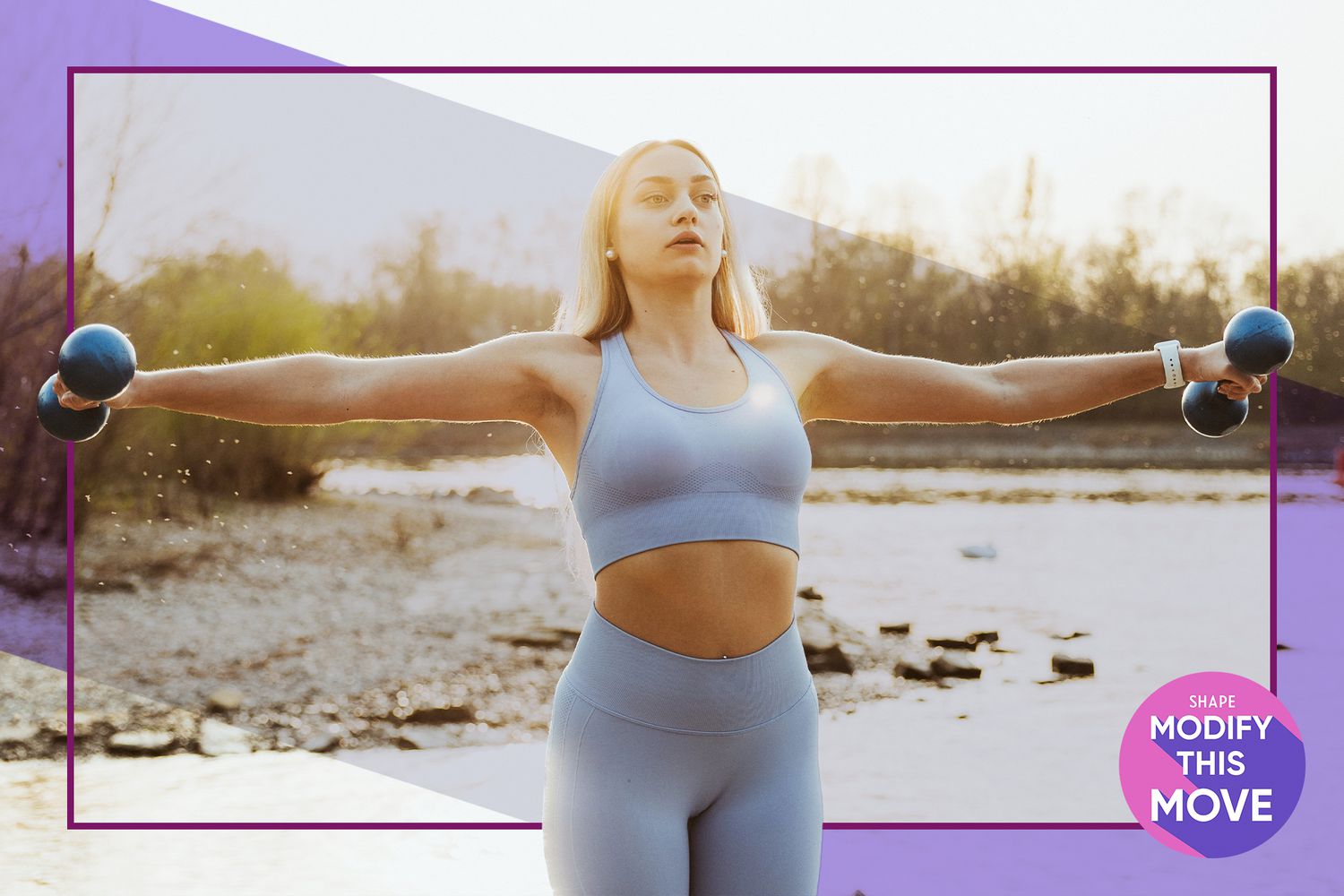Effective Shoulder Raise Variations for All Fitness Levels and Workout Goals

Lateral shoulder raises are an exercise that builds strength and muscle in the medial or side deltoid. It's important to perform side delt exercises if you want to build round, shapely delts since these muscles are not targeted as easily with compound shoulder movements such as shoulder presses. Plus, the side delts are not utilized during pushing or pulling exercises like the front and rear delts are.
For instance, whenever you perform pushing movements, such as bench presses, your anterior (front) delts are worked, and whenever you perform pulling movements, such as rows, your rear delts are worked. Lateral raises help build out a more rounded, full shoulder muscle.
Choose a weight that allows you to complete at least 10 reps without approaching failure. The side delts are smaller muscles that work best when lighter weights are used for more repetitions, especially during the lateral shoulder raise since the weight is held a the farthest distal point from the muscle, which can stress the elbow joint if heavy weights are used for fewer reps. You can keep your elbow straight or maintain a slight bend, depending on what feels best for your joints.
Lateral raises can be challenging for beginners since raising both arms out to the sides can challenge your stability and core strength. If you find it tricky to raise both arms at once and maintain a straight and stable back and pelvis, make it easier by performing single-arm lateral raises instead. You can do these standing or from a seated position.
To make a lateral shoulder raise harder, you can take advantage of slower concentric (raising) and eccentric (lowering) motion during the lift. Slowing down the movement adds more time under tension, and slower eccentrics provide additional muscle growth stimulus for your side delts.
If you have tight or sore shoulders or elbows, you can adjust how you perform a lateral raise to take pressure off the joints and is easier on the elbow, rotator cuff, and tendons. Instead of starting and finishing with the weights directly at your sides, keep them slightly in front of your body and make small adjustments in wrist angle and range of motion to allow more freedom of movement for your shoulder joint and take pressure off the elbows.
The full ROM (range of motion) lateral raise is a variation that provides some additional stimulus and hits more muscle fibers. For this variation, you'll likely need to reduce your normal weight a bit. You'll be continuing to raise the weights beyond the 90-degree parallel to your shoulders, continuing until 45 degrees above parallel or completely over your head. This variation takes advantage of gravity, keeping tension on the side delts for a larger range of motion and longer duration. You will also work your trapezius muscles with this variation.
The leaning lateral raise is a variation that can help some people feel their side delts more and helps you keep tension on the lateral delt longer due to the action of gravity providing more resistance while leaning. For this variation, you will need an anchor point you can hold onto and lean from, such as a rack or the top of an exercise bench.




